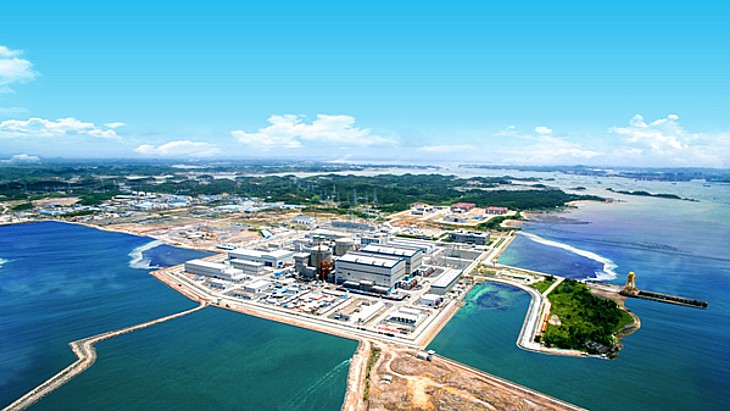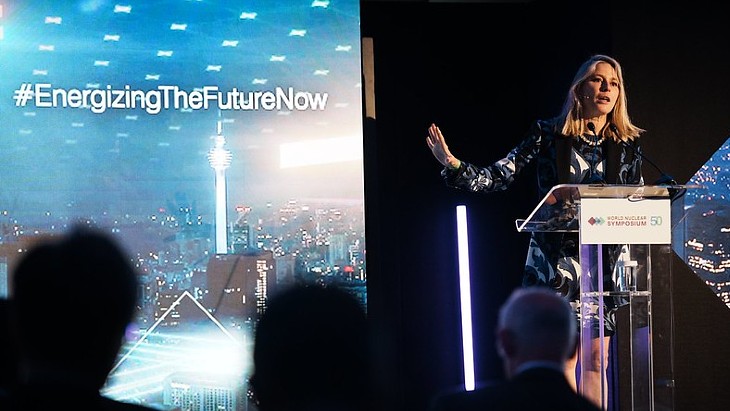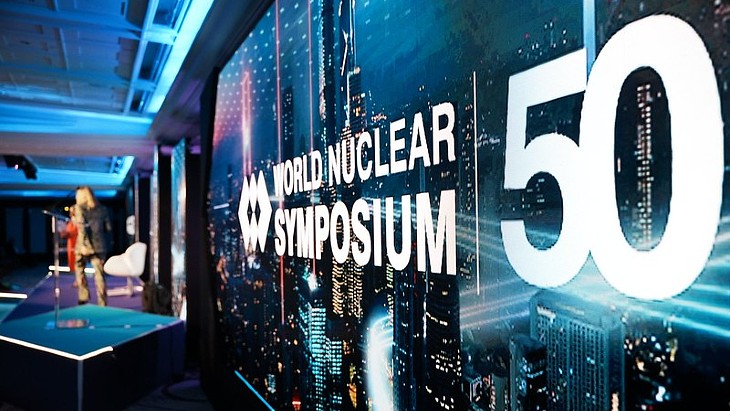Installation of the three rings - each with a wall thickness of almost 4.5 centimetres, an inner diameter of about 39.6 metres and an overall height of about 11.6 metres - was completed on 5 June, the Shanghai Nuclear Engineering Research and Design Institute (SNERDI) announced. The total hoisting weight was about 826 tonnes.
In addition to installing temporary stiffening ribs, accessory plates, air deflector brackets, guide devices, lifting ears and other items on the shell, pipelines, electrical, ventilation, steel structures and electric winches were also installed in advance to further save the installation time of items on the island, reduce the risk of cross-operation, and improve on-site work efficiency, SNERDI said.
The construction of two new reactors at each of the Sanmen, Haiyang and Lufeng sites in China was approved by China's State Council in April 2021. The approvals were for Sanmen units 3 and 4, Haiyang 3 and 4 and units 5 and 6 of the Lufeng plant. The Sanmen and Haiyang plants are already home to two Westinghouse AP1000 units each, and two CAP1000 units were approved for Phase II (units 3 and 4) of each plant.
The CAP1000 reactor design - the Chinese version of the AP1000 - uses modular construction techniques, enabling large structural modules to be built at factories and then installed at the site. This means that more construction activities can take place at the same time, reducing the time taken to build a plant as well as offering economic and quality control benefits.
The first safety-related concrete was poured for the nuclear island of Sanmen 3 on 28 June 2022, marking the official start of its construction. The first concrete for that of unit 4 was poured on 22 March last year. The units are expected to be connected to the grid in 2027 and 2028, respectively.

.jpg)




_84504.jpg)
_58447.jpg)





